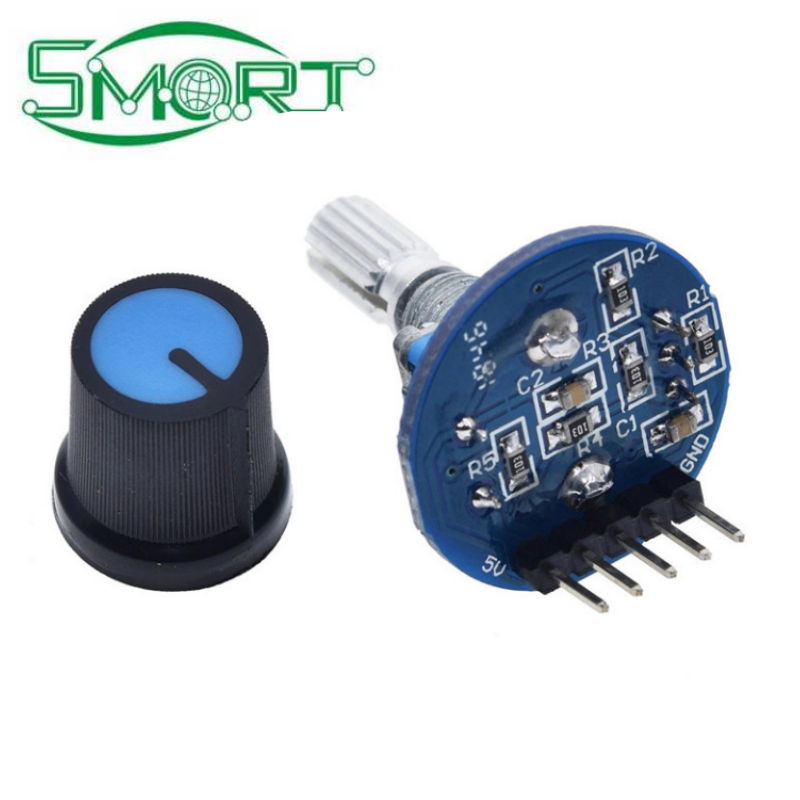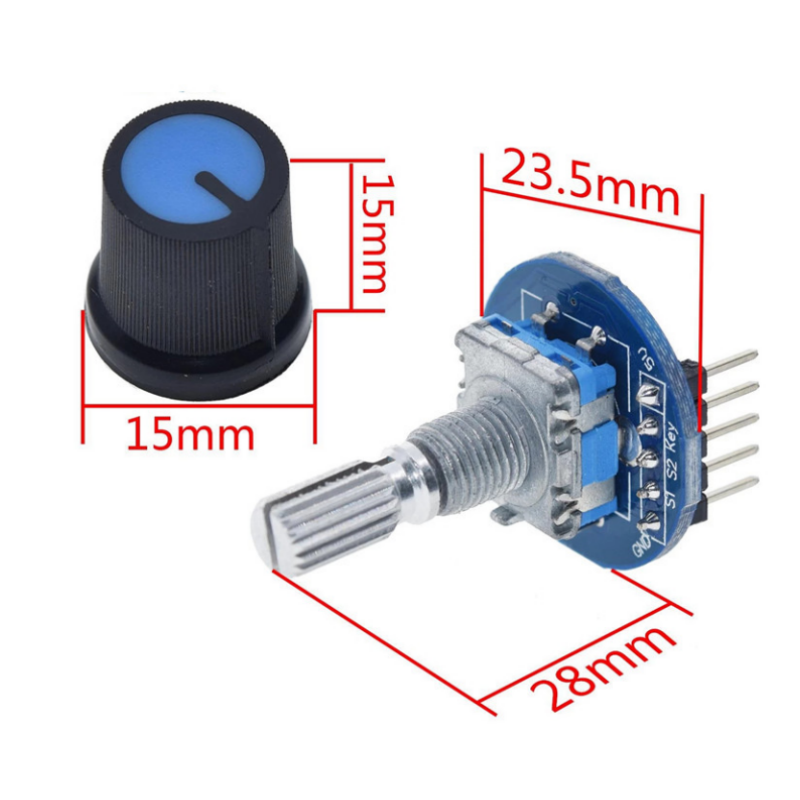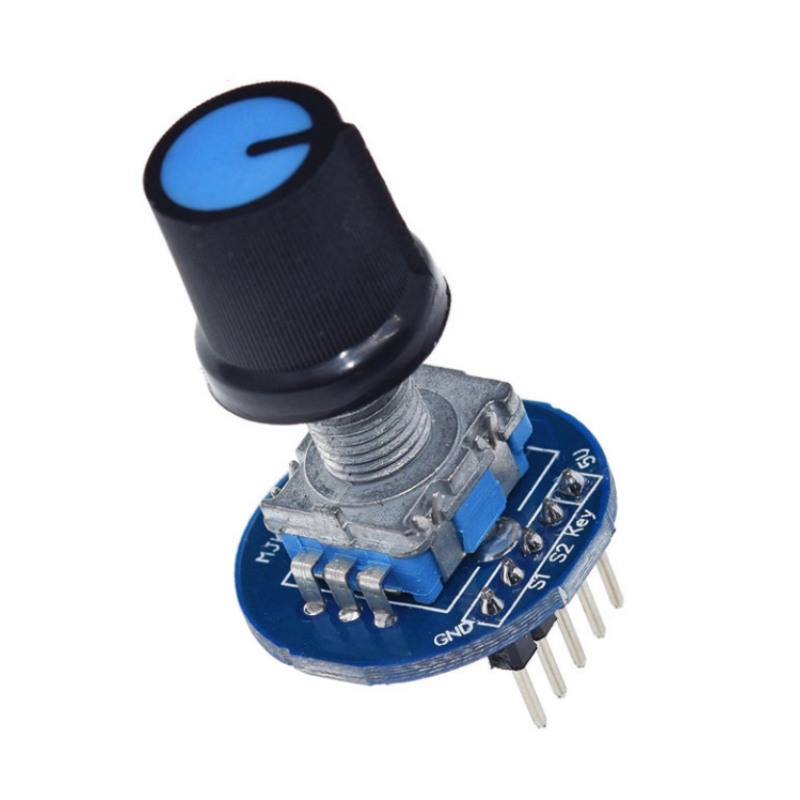Smart Electronics 360 Degree Rotary Potentiometer Digital Pulse Output Digital Rotary Encoder Module Rotary Potentiometer

Smart Electronics 360 Degree Rotary Potentiometer Digital Pulse Output Digital Rotary Encoder Module Rotary Potentiometer

Working voltage: 5V
Number of pulses per revolution: 20
The rotary encoder can be rotated to count the number of pulses output during forward and reverse
rotation. Unlike potentiometers, there is no limit to the number of rotations that can be counted.
With the key on the rotary encoder, it can be reset to the initial state, i.e. counting from 0.
Principle of operation:
An incremental encoder is a rotary sensor that converts rotational displacement into a series of
digital pulse signals. These pulses are used to control the angular displacement. The conversion of
angular displacement in Eltra encoders utilizes the photoelectric scanning principle. The readout
system is based on the rotation of a radial indexing disk (code disk) consisting of alternating
light-transmitting and light-opaque windows, illuminated vertically at the same time by a source
of infrared light, which projects the image of the code disk onto the surface of a receiver. The
receiver is covered with a diffraction grating which has the same window width as the code disk.
The work of the receiver is to sense the changes produced by the rotation of the disk and then
convert the optical changes into corresponding electrical changes. The low level signal is then
raised to a higher level and produces square pulses without any interference, which must be
processed by electronic circuits. Readout systems usually use differential methods, that is, two
different signals with the same waveform but a phase difference of 180 ° are compared in order
to improve the quality and stability of the output signal. The readout is formed on the basis of
the difference between the two signals, thus eliminating interference.














